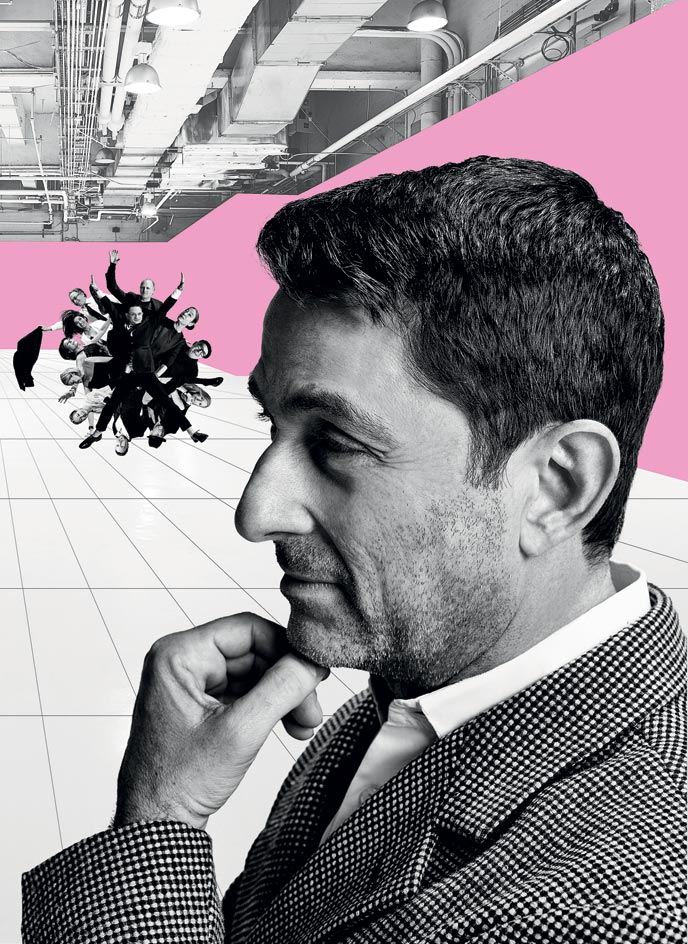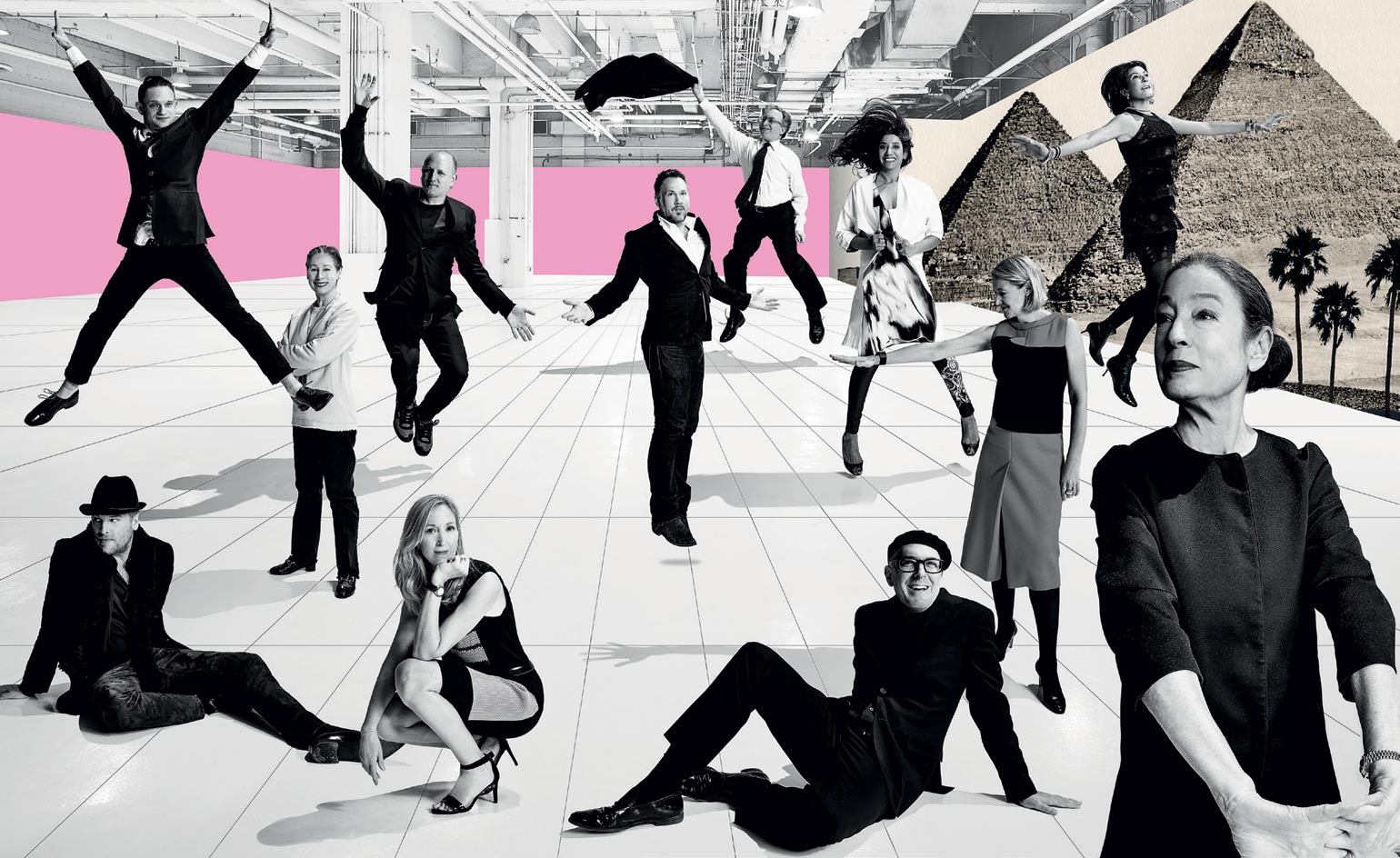Super group: the team effort that makes Collective Design NYC’s go-to contemporary fair

‘I didn’t set out to launch a design fair. I just asked a question,’ explains Steven Learner, the architect and interior designer who founded Collective Design three years ago. ‘I was visiting fairs to shop for clients, and wherever I was, I found I was mainly buying from New York dealers for New York clients, and shipping things back. It seemed at the very least rather wasteful. I didn’t understand why there wasn’t a commercial platform for collectable design in New York.’
Learner consulted acquaintances and friends in the art and design industries, including Zesty Meyers and Evan Snyderman, who run the design gallery R & Company, and Caroline Baumann, the director of the Cooper-Hewitt Museum, to ask if such a platform could work. What started out as an informal canvas of friends quickly became one of the defining cornerstones of the fair: a formal panel of design luminaries, known as the Collective, overseeing its direction.
‘Operators, visitors, consumers, collectors, gallerists, curators, architects or interior designers will all have a different point of view on a fair,’ says Learner. ‘The Collective is made up of all those groups; it’s a distillation of all those different languages.’
At its inception, this core group comprised 11 members: Learner, Meyers, Snyderman and Baumann; contemporary design gallerists Cristina Grajales, Todd Merrill and Kyle DeWoody; curator Nessia Pope; architect Alexander Gorlin; editor Sarah Medford; and collector Beth Rudin DeWoody. Interior designer Brad Ford and architect David Mann, who both first experienced the fair as visitors and wanted to become more involved, joined in 2014. The panel also serves as the fair’s selection committee, inviting galleries from around the world to exhibit in New York each year. In addition, the fair relies on a design council consisting of other design-sensitive creatives. With members ranging from actress Julianne Moore and fashion designer Reed Krakoff to interior designer Suchi Reddy and sculptor/jeweller Michele Oka Doner, the council acknowledges the diversity of the creative community and spreads the fair’s inclusive message.
‘Typically, the Collective has a couple of meetings a year,’ says Learner. ‘It’s been surprisingly unchallenging. We haven’t had any wine glasses thrown.’
According to Ford, who creates understated, elegant interiors and founded the modern makers’ craft fair, Field + Supply, in upstate New York, ‘there are some strong personalities but, at the same time, there is a lot of like-mindedness, and an appreciation for a similar aesthetic’.
So what makes the Collective Design fair so special? For one, it is held in a different venue every year. In 2013, the fair made its debut at Pier 57, a raw, riverside location straddling Manhattan’s Meatpacking District and Chelsea. In 2014, Collective Design pitched up in Moynihan Station, an austere space situated within the historic James A Farley post office in midtown Manhattan.
‘There have always been design fairs, but this really pushes the edge,’ says Mann, founding partner of MR Architecture + Décor and creator of boutiques for Pierre Hardy and Lanvin. ‘I love that these venues have been in very interesting spaces that are a little out of the way. It just makes it all the more intriguing. My clients love it.’
‘I challenge myself to create a sense of discovery every year,’ says Learner. ‘Finding a new venue that excites me, convincing people that it’s the right spot, redesigning it, figuring out the logistics, making sure the galleries are comfortable – all those things make it incredibly exhausting. As a business model, I wouldn’t recommend it. But as a visitor, I believe it is a fantastic experience.’
This year’s edition will draw design fans to an overlooked part of west SoHo that is increasingly known as Clarkson Square. A sequence of warehouses that served as a terminus of the High Line in its past life, the barren, all-white space is a stark contrast to the swish hotels, restaurants and design showrooms just blocks away. ‘It’s a huge space, but because it’s broken into galleries, it maintains an intimacy,’ explains Learner. ‘It’s critical for me that we keep [the fair] small. Clients need to see, feel, touch and sit, to really understand the materiality and proportions of things. Time and quiet, as opposed to fair frenzy, are required for thoughtful decision-making.’
The fair’s tightly edited roster of galleries ensures that its visitors see the best of what the design world has to offer. ‘There’s no brown furniture in this fair. It has a certain amount of 20th century, but only 20th century as it relates to how we are today,’ says Merrill. ‘It’s very much a fair that’s of the moment and represents design in 2015. The grey area between design and art is also extremely well represented. It surprises clients. The opening night is hugely successful every time.’
For now, Collective Design remains a New York entity, but there are ambitions to expand it, says Learner. ‘We want to build on Collective’s successes, to work in other cities that have a need and an ecosystem to support us. I envision us expanding our universe of design voices as we continue to grow.’
As originally featured in the May 2015 issue of Wallpaper* (W*194)

Our collage nods to that other high-powered collective, Superstudio. Top, left to right: Evan Snyderman, gallerist R & Company; Cristina Grajales, gallerist; Zesty Meyers gallerist, R & Company; Brad Ford, interior designer; Alexander Gorlin, architect; Suchi Reddy, interior designer; Nessia Pope, curator. Bottom, right to left: Michele Oka Doner, sculptor and jeweler; Caroline Baumann, Cooper-Hewitt Director; David Mann, architect; Sarah Medford, Collective Design Director Strategic Development; Todd Merrill, gallerist.
ADDRESS
Skylight Clarkson Sq, 550 Washington Street, New York
Wallpaper* Newsletter
Receive our daily digest of inspiration, escapism and design stories from around the world direct to your inbox.
Pei-Ru Keh is a former US Editor at Wallpaper*. Born and raised in Singapore, she has been a New Yorker since 2013. Pei-Ru held various titles at Wallpaper* between 2007 and 2023. She reports on design, tech, art, architecture, fashion, beauty and lifestyle happenings in the United States, both in print and digitally. Pei-Ru took a key role in championing diversity and representation within Wallpaper's content pillars, actively seeking out stories that reflect a wide range of perspectives. She lives in Brooklyn with her husband and two children, and is currently learning how to drive.
-
 The Subaru Forester is the definition of unpretentious automotive design
The Subaru Forester is the definition of unpretentious automotive designIt’s not exactly king of the crossovers, but the Subaru Forester e-Boxer is reliable, practical and great for keeping a low profile
By Jonathan Bell
-
 Sotheby’s is auctioning a rare Frank Lloyd Wright lamp – and it could fetch $5 million
Sotheby’s is auctioning a rare Frank Lloyd Wright lamp – and it could fetch $5 millionThe architect's ‘Double-Pedestal’ lamp, which was designed for the Dana House in 1903, is hitting the auction block 13 May at Sotheby's.
By Anna Solomon
-
 Naoto Fukasawa sparks children’s imaginations with play sculptures
Naoto Fukasawa sparks children’s imaginations with play sculpturesThe Japanese designer creates an intuitive series of bold play sculptures, designed to spark children’s desire to play without thinking
By Danielle Demetriou